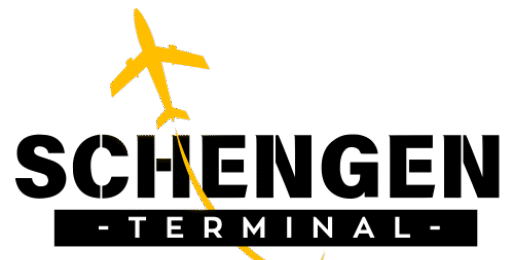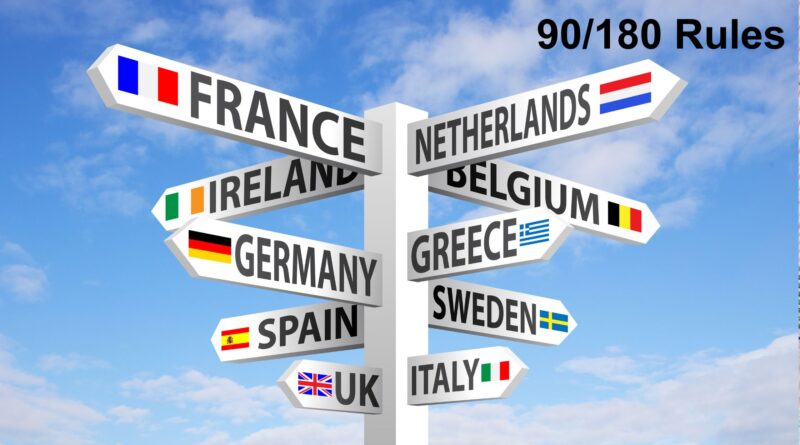Schengen Countries List 2025 – Complete Guide for Travelers
Schengen Countries List 2025 – Complete Guide for Travelers
Planning a European adventure? Understanding the Schengen Area is your key to seamless travel across 29 incredible countries. This comprehensive guide reveals everything you need to know about Schengen countries, visa requirements, and insider travel tips that could save you hours at border crossings.
What is the Schengen Area? A Traveler’s Dream Come True
Imagine stepping off a train in Paris, hopping on a bus to Amsterdam, and then driving to Berlin – all without showing your passport once. This isn’t a fantasy; it’s the reality of traveling within the Schengen Area, Europe’s passport-free zone that has revolutionized continental travel since 1985.
The Schengen Agreement, named after the small Luxembourg village where it was signed, created the world’s largest free-travel area. Today, it covers most of the European Union plus several non-EU countries, allowing over 400 million people to move freely across internal borders.
Complete Schengen Countries List 2025: Your Passport to Freedom
The 29 Schengen Member Countries
European Union Schengen Members (23 countries):
- Austria – Known for the Sound of Music landscapes and Alpine adventures
- Belgium – Home to Brussels, EU headquarters, and the world’s best chocolate
- Bulgaria – Newly added in Schengen zone.
- Czech Republic – Prague’s fairy-tale architecture awaits
- Denmark – Viking history meets modern Scandinavian design
- Estonia – Digital innovation hub with medieval charm
- Finland – Land of a thousand lakes and the Northern Lights
- France – From Parisian elegance to Riviera glamour
- Germany – Oktoberfest, castles, and cutting-edge technology
- Greece – Ancient history meets stunning island life
- Hungary – Thermal baths and architectural marvels in Budapest
- Italy – Renaissance art, Roman history, and incredible cuisine
- Latvia – Art Nouveau architecture and pristine beaches
- Lithuania – Baroque old towns and amber coastlines
- Luxembourg – Europe’s financial heart in miniature
- Malta – Mediterranean paradise with 7,000 years of history
- Netherlands – Tulips, windmills, and progressive culture
- Poland – Medieval cities and hearty cuisine
- Portugal – Coastal beauty and port wine traditions
- Romania – Newly added in Schengen zone.
- Slovakia – Carpathian mountains and spa towns
- Slovenia – Lake Bled’s fairy-tale setting
- Spain – Flamenco, tapas, and diverse regional cultures
- Sweden – IKEA’s homeland and archipelago adventures
- Croatia – Game of Thrones filming locations and crystal-clear waters
Non-EU Schengen Members (4 countries):
- Iceland – Fire, ice, and the Blue Lagoon
- Liechtenstein – Alpine principality between Austria and Switzerland
- Norway – Fjords, Northern Lights, and midnight sun
- Switzerland – Precision, chocolate, and mountain peaks
Special Territories (2 areas):
- Monaco – Glamorous city-state on the French Riviera
- Vatican City – The world’s smallest country within Rome
Countries That Might Surprise You
Many travelers assume all EU countries are in Schengen, but several notable exceptions exist. The United Kingdom (now post-Brexit) never joined, while Ireland maintains its own border arrangements. Bulgaria, Romania, and Cyprus are EU members working toward full Schengen integration, currently applying Schengen rules with some limitations.
Understanding Schengen Visa Requirements: Your Gateway to Europe
Who Needs a Schengen Visa?
Your passport determines your Schengen experience. Citizens from visa-exempt countries can enter for tourism or business for up to 90 days within any 180-day period without a visa. This includes:
- United States and Canada
- Australia and New Zealand
- Japan and South Korea
- Most Latin American countries
- Many other developed nations
However, travelers from countries like India, China, Russia, and most African and Asian nations need to obtain a Schengen visa before arrival.
The 90/180 Rule Explained Simply
This rule often confuses travelers, but it’s straightforward once you understand it. You can stay in the Schengen Area for 90 days within any rolling 180-day period. Think of it as a sliding window – on any given day, you can’t have spent more than 90 days in Schengen countries during the previous 180 days.
For example, if you enter on January 1st and stay for 90 days (until March 31st), you must wait until June 29th before you can enter again for another extended stay.
Types of Schengen Visas
Short-stay visa (Type C): The most common visa for tourists, valid for stays up to 90 days within 180 days.
Long-stay visa (Type D): For extended stays over 90 days, typically for work, study, or family reunification.
Transit visa (Type A): For travelers passing through Schengen airports without entering the country.
The Rich History Behind Schengen: From Village to Vision
The story begins in 1985 in Schengen, Luxembourg, where representatives from five countries – France, Germany, Belgium, Netherlands, and Luxembourg – signed an agreement that would change European travel forever. Their vision was simple yet revolutionary: eliminate border controls between participating countries.
The agreement officially came into effect in 1995, starting with seven countries. The initial skepticism quickly faded as the benefits became clear. Trade increased, tourism flourished, and the European identity strengthened. Today, the Schengen Area represents one of the European Union’s greatest achievements.
What makes this story remarkable is how a small farming village of just 5,000 people gave its name to a system that now facilitates over 1.25 billion border crossings annually. The European Museum in Schengen village tells this fascinating story and is worth a visit for any European travel enthusiast.
Practical Benefits of the Schengen Agreement
For Tourists and Travelers
The advantages are immediately apparent when you step off a plane in any Schengen country. No lengthy immigration queues between countries, no passport stamps cluttering your pages, and no currency exchange in eurozone Schengen countries. This seamless experience allows you to focus on what matters – exploring Europe’s incredible diversity.
Business travelers particularly benefit from reduced travel time and costs. A sales executive can attend meetings in Frankfurt, Brussels, and Amsterdam in a single day without bureaucratic delays. Students studying in one Schengen country can easily travel for research, internships, or simply weekend adventures.
For European Integration
Beyond convenience, Schengen has strengthened European integration. It has created a true European labor market where citizens can work across borders without permits. Cultural exchange has flourished as young Europeans can easily study, work, and live in different countries, creating a generation that thinks beyond national boundaries.
The economic impact is substantial. Studies suggest that Schengen adds approximately 0.5% to EU GDP annually through increased trade, tourism, and labor mobility. That translates to billions in economic benefits and millions of jobs.
How Border Controls Actually Work in Schengen
External vs. Internal Borders
Understanding the difference between external and internal borders is crucial. External borders – those between Schengen and non-Schengen countries – maintain strict controls with passport checks, customs inspections, and security screening. These borders are heavily monitored using advanced technology and coordinated intelligence sharing.
Internal borders between Schengen countries typically have no controls, though you might see unmanned border posts or signs indicating you’ve crossed into another country. However, countries can temporarily reintroduce border controls during emergencies, major events, or security threats.
The Role of SIS (Schengen Information System)
Behind the scenes, the Schengen Information System serves as Europe’s security backbone. This massive database allows law enforcement agencies to share information about wanted persons, stolen vehicles, missing persons, and security threats across all member countries. When you present your passport at any Schengen external border, it’s checked against this system within seconds.
Schengen Travel Tips: Making the Most of Your European Adventure
Planning Your Itinerary
Start with your main destination – the country where you’ll spend the most time should typically be where you apply for your visa (if needed). This “main destination rule” is important for visa applications but also helps with travel planning.
Consider transportation connections when planning your route. The excellent train network connects major Schengen cities efficiently. High-speed trains like the TGV, ICE, and AVE make intercity travel faster than flying when you factor in airport time.
Essential Documents to Carry
Even though internal border controls are minimal, carry proper identification at all times. Your passport or national ID card (for EU citizens) should be readily accessible. Some budget airlines and hotels require passport presentation, and random police checks, while rare, do occur.
Keep digital copies of important documents stored securely online. Services like Google Drive or iCloud ensure you have backup access if documents are lost or stolen.
Money Matters
Twenty Schengen countries use the Euro, simplifying currency exchange. However, Denmark, Sweden, Poland, Czech Republic, Hungary, Croatia, Norway, Iceland, and Switzerland maintain their national currencies. Research exchange rates and consider getting small amounts of local currency for countries outside the Eurozone.
Many establishments accept cards, but carrying some cash is advisable, especially for small purchases, tips, or in rural areas where card acceptance might be limited.
Transportation Across Borders
Train travel offers the most authentic Schengen experience. Services like Eurail passes provide excellent value for multi-country trips. Bus services from companies like FlixBus connect cities economically, while budget airlines offer quick connections for longer distances.
Renting a car provides ultimate flexibility but requires understanding varying traffic rules, toll systems, and parking regulations across countries. International driving permits are recommended, and some countries have specific requirements for winter tires or equipment.
Common Misconceptions About Schengen Countries
“All EU Countries Are in Schengen”
This persistent myth leads to travel confusion. Ireland and Cyprus are EU members but not fully in Schengen. Bulgaria and Romania are EU members with limited Schengen participation. Conversely, Norway, Iceland, Switzerland, and Liechtenstein are in Schengen but not EU members.
“No Border Controls Means No Security”
Enhanced security exists through intelligence sharing, random checks, and sophisticated monitoring systems. The absence of routine border controls doesn’t mean absence of security – it means smarter, coordinated security.
“Schengen Visa Guarantees Entry”
A Schengen visa permits travel to the area but doesn’t guarantee entry. Border officers can still deny entry for various reasons including insufficient funds, unclear travel purpose, or security concerns.
Recent Changes and Updates to Schengen
ETIAS: The New Authorization System
Starting in 2024, visa-exempt travelers will need ETIAS (European Travel Information and Authorization System) authorization before entering Schengen countries. Similar to the US ESTA system, ETIAS requires online application with a small fee and is valid for three years.
This system enhances security while maintaining travel convenience. The application process takes minutes online, and approval typically comes within hours, though applying at least 72 hours before travel is recommended.
Digital Transformation
The EU is implementing digital borders with biometric entry/exit systems. These systems will automatically record traveler movements, making the 90/180 rule easier to track and enforce. Advanced traveler programs for frequent visitors are also under development.
COVID-19 Impact and Recovery
The pandemic temporarily suspended the principle of free movement, with countries reintroducing border controls for health screening. While most restrictions have lifted, some health-related entry requirements may persist or be reintroduced during health emergencies.
Schengen for Business Travelers
Streamlined Business Operations
For business travelers, Schengen eliminates significant operational complexity. Multi-country sales trips, conference attendance, and client meetings become logistically simple. This efficiency particularly benefits small and medium enterprises that might otherwise find cross-border business prohibitively complex.
Digital Nomads and Remote Work
The rise of remote work has created new opportunities for digital nomads within Schengen countries. Many locations offer favorable conditions for remote workers, from Estonia’s digital residency program to Portugal’s D7 visa for remote workers and digital nomads.
Cultural Diversity Within Schengen
A Continent of Contrasts
Despite shared borders, Schengen countries maintain distinct cultural identities. From Norway’s fjords to Malta’s Mediterranean charm, from Finland’s sauna culture to Spain’s flamenco traditions, the diversity is staggering. This cultural variety within a unified travel framework creates unparalleled opportunities for cultural exploration.
Language Learning Opportunities
Schengen’s free movement facilitates language learning and cultural immersion. Students can study French in Paris, practice German in Berlin, and perfect Spanish in Barcelona – all within the same visa framework. This linguistic diversity is one of Europe’s greatest assets.
Environmental Considerations
Sustainable Travel Options
The excellent rail network within Schengen countries supports sustainable travel. High-speed trains produce significantly lower carbon emissions per passenger than flights. The European railway system continues expanding, with night trains making a comeback for environmentally conscious travelers.
Green Initiatives
Many Schengen countries lead in environmental protection and sustainable tourism. From Sweden’s commitment to carbon neutrality to Switzerland’s extensive recycling programs, travelers can experience world-class environmental initiatives firsthand.
Technology and Innovation in Schengen
Smart Border Solutions
Automated border control systems (ABC gates) use biometric technology to speed passenger processing at external borders. These systems, already operational in many Schengen airports, will expand to all major entry points, reducing wait times while enhancing security.
Mobile Applications
Various apps help Schengen travelers navigate visa requirements, track their 90/180 rule compliance, and access real-time border information. The official EU apps provide authoritative information and are regularly updated.
Economic Impact of Schengen
Tourism Statistics
Schengen facilitates over 1.25 billion annual border crossings, generating enormous economic value. Tourism accounts for approximately 10% of EU GDP, with Schengen’s free movement principle directly contributing to this success.
Trade Benefits
Eliminating border controls has dramatically reduced transportation costs and delivery times for goods moving between Schengen countries. This efficiency translates into lower consumer prices and increased competitiveness for European businesses.
Future of the Schengen Area
Expansion Possibilities
Several countries are working toward Schengen membership. Romania and Bulgaria continue their integration process, while other Balkan countries aspire to eventual membership. Each expansion requires unanimous approval from existing members and meeting strict criteria.
Technological Evolution
Future developments include enhanced biometric systems, artificial intelligence for security screening, and blockchain technology for secure document verification. These innovations will maintain security while preserving the seamless travel experience.
Challenges and Opportunities
Climate change, demographic shifts, and geopolitical changes will influence Schengen’s evolution. The area’s flexibility and adaptability will be crucial for addressing these challenges while maintaining the free movement principle.
Frequently Asked Questions (FAQ)
General Schengen Questions
Q: How many countries are in the Schengen Area? A: There are 29 countries and territories in the Schengen Area as of 2025, including 27 European countries plus Monaco and Vatican City.
Q: Can I work in any Schengen country with a tourist visa? A: No, tourist visas and visa-free entry only permit tourism and short business activities. Working requires appropriate work permits and visas specific to each country.
Q: What happens if I overstay my 90 days in Schengen? A: Overstaying can result in fines, deportation, and bans on future entries ranging from one to five years. Always monitor your days carefully and leave before the 90-day limit.
Q: Are there any countries that look like they should be in Schengen but aren’t? A: Yes, several countries might surprise you. The UK (even before Brexit) was never in Schengen, Ireland maintains its own arrangements, and several EU countries like Bulgaria and Romania have limited participation.
Visa and Entry Questions
Q: Do I need a visa to visit Schengen countries from the US? A: US citizens don’t need a visa for stays up to 90 days within 180 days for tourism or business. However, starting in 2024, you’ll need ETIAS authorization before travel.
Q: Can I extend my 90-day stay in Schengen countries? A: Extensions are only possible in exceptional circumstances like medical emergencies. Generally, you must leave and wait the required period before returning.
Q: Which Schengen country should I apply for a visa through? A: Apply through the country where you’ll spend the most time. If spending equal time in multiple countries, apply through your first entry point.
Q: Can I enter through one Schengen country and exit through another? A: Absolutely! This is one of Schengen’s main benefits. You can enter in Spain and exit in Germany with no additional requirements.
Travel and Transportation Questions
Q: Do I need to show my passport when traveling between Schengen countries? A: Generally no, but carry it anyway. Airlines may require it for identification, hotels need it for registration, and random checks can occur.
Q: Can I rent a car in one Schengen country and return it in another? A: Many rental companies allow this, though cross-border fees may apply. Confirm policies when booking and ensure your driving license is valid in all countries you’ll visit.
Q: Are there any restrictions on what I can bring between Schengen countries? A: Most goods can be transported freely for personal use, but some restrictions apply to firearms, certain medications, and large quantities of alcohol or tobacco.
Practical Questions
Q: How do I calculate my 90 days in Schengen accurately? A: Use online calculators or mobile apps designed for this purpose. Count both arrival and departure dates, and remember it’s any 90 days within a rolling 180-day period.
Q: What if I lose my passport while in Schengen countries? A: Contact your embassy or consulate immediately. They can issue emergency travel documents. Having digital copies of your passport can expedite this process.
Q: Can I travel to non-Schengen EU countries with a Schengen visa? A: No, a Schengen visa doesn’t cover countries like Ireland, Bulgaria (limited coverage), Romania (limited coverage), or Cyprus. These require separate visas unless you hold an EU passport.
Q: Is travel insurance required for Schengen countries? A: Travel insurance with minimum €30,000 coverage is required for visa applications and recommended for all visitors. Many countries may request proof at entry.
Conclusion: Your European Adventure Awaits
The Schengen Area represents one of humanity’s greatest achievements in international cooperation. It proves that borders can unite rather than divide, creating opportunities for millions of travelers, students, workers, and adventurers every year.
Whether you’re planning a grand European tour, a business trip across multiple countries, or simply curious about this remarkable system, understanding Schengen opens doors to experiences that previous generations could only dream of. From the Northern Lights in Iceland to the ancient ruins of Greece, from Swiss Alpine peaks to Croatian coastal beauty, 29 countries await your exploration with unprecedented ease.
The key to successful Schengen travel lies in preparation and understanding. Know the rules, respect the regulations, and embrace the incredible diversity that makes Europe such a captivating destination. With proper planning and the information in this guide, your European adventure can be everything you’ve imagined and more.
Remember that while borders may have faded, the distinct character of each Schengen country remains vibrantly intact. This combination of unity and diversity makes the Schengen Area truly unique in our world – a place where you can experience dozens of cultures, languages, and traditions within a single, seamless journey.
Start planning your Schengen adventure today. Europe is waiting, and with this knowledge in hand, you’re ready to explore it like never before.
For the most up-to-date visa requirements and travel information, always consult the official European Union immigration portal before traveling. Travel requirements can change, and official sources provide the most current information.
About the Author: This comprehensive guide was created by travel experts with extensive experience in European travel and immigration law. We regularly update our content to reflect the latest changes in Schengen policies and procedures.




